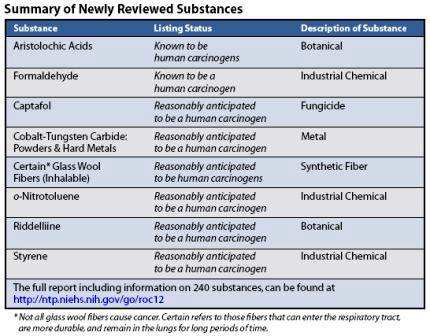According to the 12th RoC, of the other seven carcinogens, some pose direct hazards and others pose lower or indirect danger to home inspectors and homeowners. Here are their characteristics and risks:
- Styrene is a colorless, flammable liquid with a sweet odor. It’s a highly volatile industrial chemical used to make polystyrene and resins, such as reinforced plastic and rubbers. Exposure is mostly occupational, apart from the risk of that produced by cigarette smoke.
- Certain inhalable glass wool fibers include synthetic and man-made small, finely spun fibers of glass that form a mass resembling wool. Due to their low durability, most home insulation fibers are less likely to cause cancer in humans. However, mechanistic studies have shown that some glass wool fibers have the potential to cause damage to DNA.
- Cobalt–tungsten carbide hard metals are commonly referred to as cemented carbides, and the terms sintered carbide and tungsten carbides may also be used. Exposure is mostly occupational. About 70% of cobalt–tungsten carbide hard-metal production is used for cutting tools and 30% for wear-resistant materials, primarily for tools for mining and grinding operations.
- Aristolochic acids are a family of acids found naturally in the plants Aristolochia andAsarum, which grow throughout the United States and worldwide, and are used in herbal medicines and botanical products, including those that people may use for personal hygiene.
- Captafol is a fungicide that was used until 1987 to control fungal diseases of fruits, vegetables, ornamental plants and grasses, and was also used as a seed treatment. Additionally, it was used in the timber industry to control wood-rot fungi on logs and wood products. Legal use of existing stocks was allowed after 1987; however, in 1999, the EPA further restricted its use.
- Ortho-nitrotoluene has been detected in the air, private well water and groundwater of proximate industrial spills and nearby military training grounds and factories that produce this chemical, which is used in the manufacture of commercial and military explosives.
- Riddelliine-containing plants are not used for food and have no known commercial uses. However, two cases of accidental poisoning of infants were reported in the southwestern U.S. when it was used in medicinal herb preparations.
